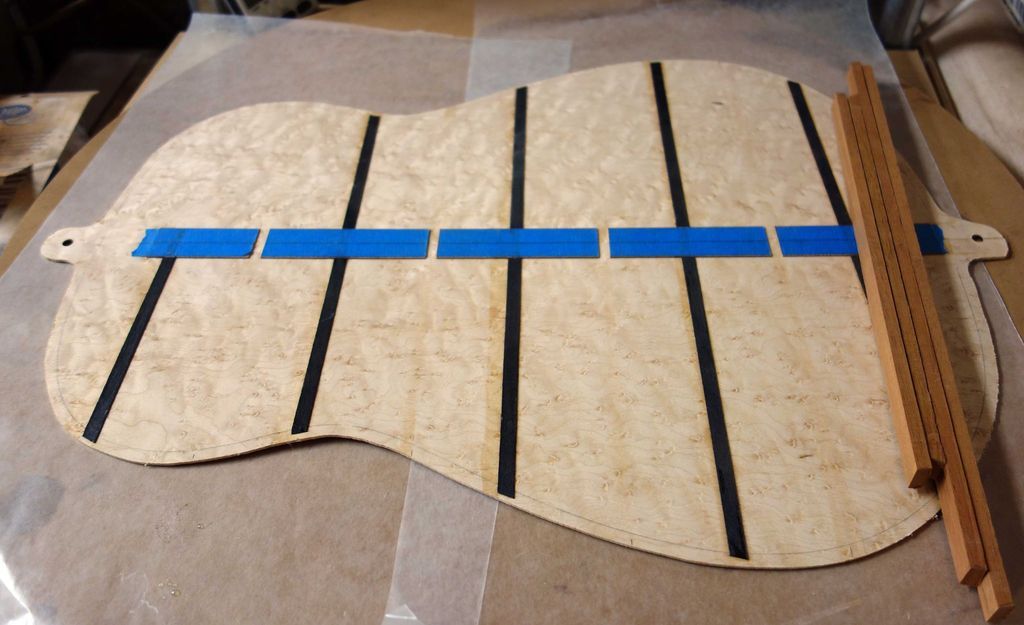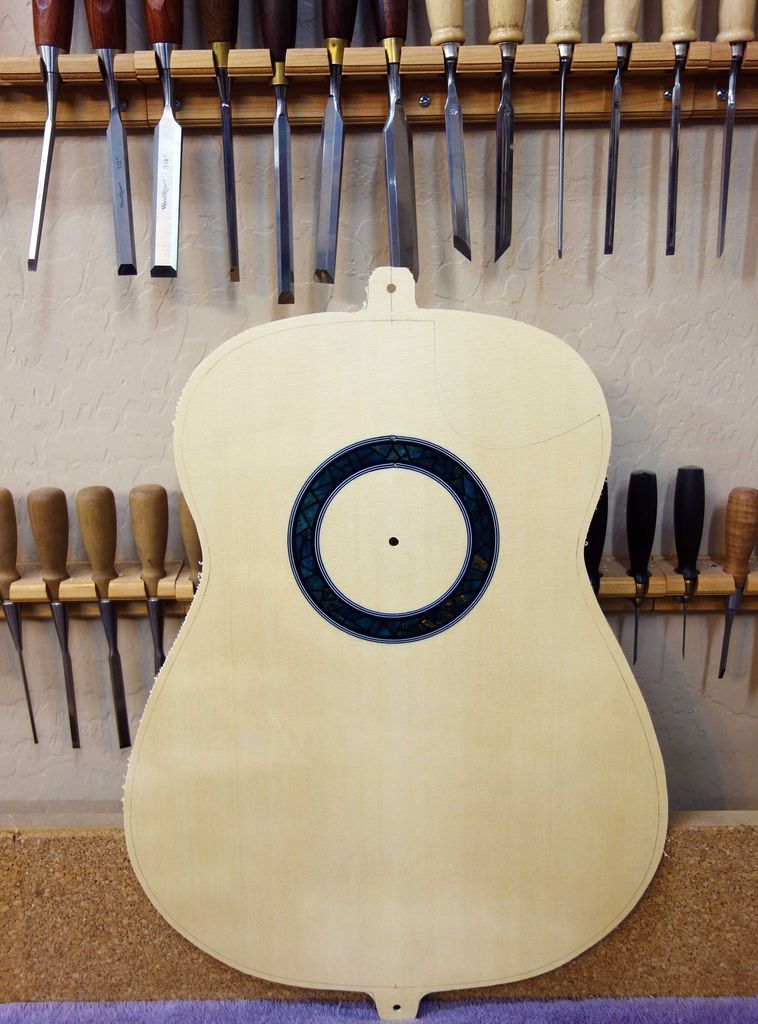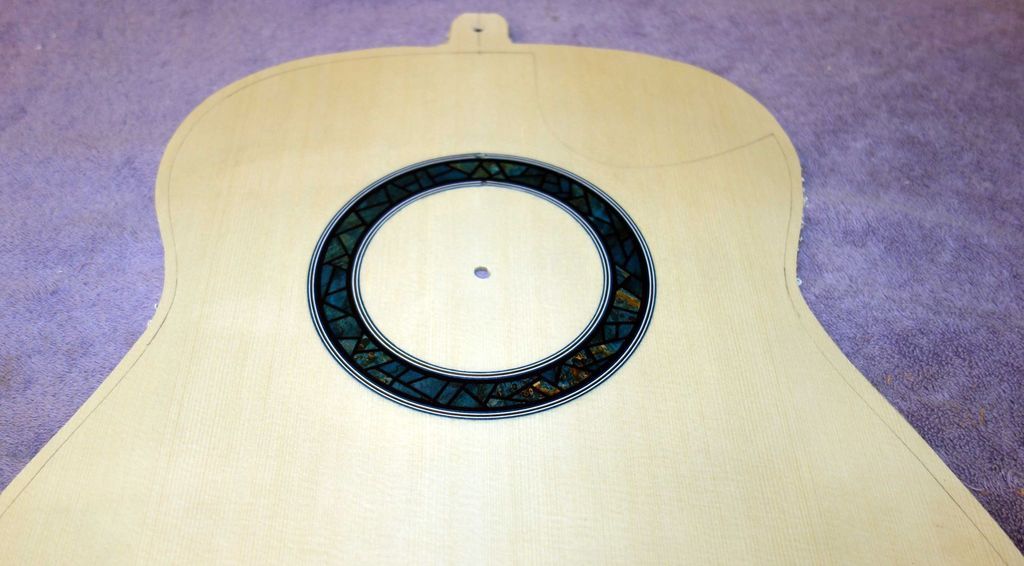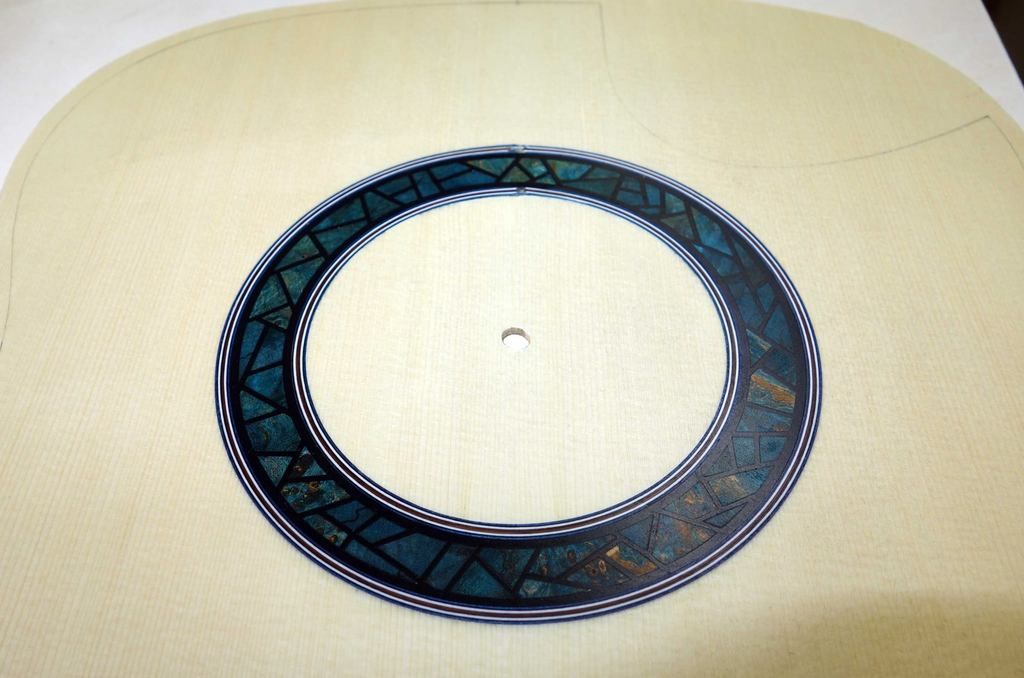
 |
|
#46
|
|||
|
|||
|
I am always interested in these discussions about tone wood and their inherent properties. Most of us have experience playing different tone woods in different types of guitars, and that experience becomes our reference for what that particular tone wood sounds like...all of the time. I can honestly say that I have only played one guitar in my life made out of bocote, so if someone were to ask me what that wood sounds like on a guitar, that would immediately become my reference. What we fail to take into account in many of these situations, and what some of you have alluded to, is intent, building methods, experience of the builder, and ability and desire to create a specified outcome.
It is true that every piece of wood has its own inherent properties... stiffness, density, grain orientation, etc. If we look at these properties by themselves, than maple will always sound different than rosewood, or koa or mahogany. But we, as builders, have the ability to adjust some of those parameters to some extent if we possess the understanding of how the guitar works and how to manipulate those parameters. I would never build a guitar out of cypress and tell my client that it is going to sound just like a BRW guitar when it is done. BUT, I can listen to the desired outcome of that client, and hear things inherent to the rosewood species, and start to understand how I can build those concepts or attributes into that cypress guitar. Will it be different...of course, but if the client desires those things in a guitar, the end result is that they would most likely be happy with the nuances of this guitar if that makes any sense. Factory guitars are not really made to act a certain way. My understanding of how most production companies run is that every guitar is made the same, regardless of woods selected. In the end, 10 guitars get shipped off to a store, and it is the buyers responsibility to find the one that works for them by playing each one and making a decision. As such, it is always difficult to use a factory guitar as a reference for what a wood sounds like, because the team of people that built it weren't really trying to adjust the parameters for an unknown buyer, but were rather just trying to complete a quality made guitar that would meet someone's needs. A luthier, in my opinion, is set apart from their counterparts in a factory in that many times the end user is known, or we are building for a specific outcome or style of music. This allows us to take into account what we want to achieve, and then start the backwards planning to achieve it. Sure, the set of wood selected is going to create a foundation, but we don't listen to that set of wood by itself on a completed guitar. We thickness it, brace it, couple it to a rim, add a top, which is also braced, put a sound hole in it, add a neck, add a bridge with a certain mass and attributes, and then add any number of strings of different gauges, materials and manufacturers to the mix. While some people see the initial set as only being able to do what it does, I look at every single process after that wood selection as being an opportunity to tweak or adjust the sound. There are hundreds of ways that I can increase treble response, some great and some small, and the same is true to increasing bass response. When looked at together, the options for adjusting sound within a guitar are almost infinite. As I stated originally, the maple guitar will not sound exactly like a rosewood guitar, but I can capture some of the nuances and desired outcomes of the client and make it pretty close. It's kind of like looking at a sports car and a pick up truck. Sure, the sports car would be the easy choice for better handling and speed, and the truck would be the best choice for storage capacity if we wanted to do nothing at all to the product. But take either one to a custom shop, and you can make the pickup truck go fast and handle better, and you can increase the storage space in the sports car. That is what we, as luthiers, are supposed to do. How we do it, and our understanding of the process may vary from builder to builder, but in my mind that is essentially what we are being paid to do. Comparing classical guitars and steel string guitars is always difficult because, as Louie pointed out, the approach is almost polar opposites. A classical guitar, by its very nature, is very strong in the bass response, and so we use things like smaller bodies, different bracing techniques, sound hole diameters, etc to achieve more treble and create a more balanced tone. Where the player wants that balance to be is much like a stereo EQ in that they may set the faders differently for each player. Steel string guitars are by their nature very strong in the treble response, although more metallic sounding as opposed to shimmery. So, as steel string builders, we try to boost the bass response, and tame the trebles to give better balance and warmth. While balance is desired by both types of builders, the approach is completely different, and in the end, a balanced nylon string guitar and a balanced steel string guitar will never sound the same. I would also argue that the players of both of these instruments are looking for different things in the result as well. I don't really know if I added anything to the conversation other than to say that I believe that different woods have different baseline properties, but we, as luthiers, can adjust those somewhat. In the end, it is about what the client wants and desires in a guitar, and my job, as the builder, is to get us there, or understand my own abilities enough to say that isn't possible. It is about discussion, communication, and expertise on the parts of the player and the builder, and using those things together to create the final product. Maple would not be my first choice for every person asking me to build them a guitar in the same way that rosewood is not the end all, be all for every player. Michael is an extremely gifted player, and knows what he wants and what works for him in a guitar. After years of listening and watching him play, this guitar is the combination of the things that he needs for his style of playing and style of music. Someone else may get a completely different recommendation from me, and yield very similar results. The wood definitely matters, but what we do with it once we start building matters far more than what the wood itself wants to do. |
|
#47
|
|||
|
|||
|
I always found it interesting that Leo Kottke never prescribed to the stereo type of Dreadnought for Flatpicking, OM for finger style and preferred Mahogany over Rosewood, yet his favourite guitar for some years was an Olson with a Rosewood back and sides, and the one before that was a Taylor 510 Mahogany bottom of the range Dreadnought.
He also had a penchant for Archtops, in fact I saw him perform on over 10 occasions in the UK and by far the best performance IMO was a whole concert played on a Gibson L5. |
|
#48
|
|||
|
|||
|
Quote:
I say we sit back and watch as Michael and Jason create this soon-to-be-masterpiece and judge its sound after it's built and not before! |
|
#49
|
|||
|
|||
|
Quote:
Interesting that some traditional classical builders feel that back/sides contribute little to the sound. I too have felt this way for a number of years. With standard building methods, I think usual steel string/classical (not cypress) back n sides species contribute very little to "the sound" of a guitar, perhaps 5-10% percent. ( 5-10% isn't minuscule, but it is "very little" in regard to how much most people usually attribute to back/sides tone.) |
|
#50
|
|||
|
|||
|
No mate, D is for "Dapper"!!!!!
|
|
#51
|
|||
|
|||
|
Quote:
|
|
#52
|
|||
|
|||
|
I think we've missed a crucial point here...
Jason: this being a Michael Watts model, will you be shipping it with a matching pocket square? Joel |
|
#53
|
|||
|
|||
|
That headstock looks remarkably like a Quiff.
|
|
#54
|
|||
|
|||
|
Quote:
For example I have played a few guitars made by Kim Walker over the years - the one made of maple had all the Kim Walker signature tone and its own very special tone thing going on but no one would mistake it for the sound of the brazillian rosewood Walker that I have played. |
|
#55
|
|||
|
|||
|
Thanks for all the comments so far guys, I've enjoyed reading them. As far as the classical/nylon string guitars side of things goes, they are very different instruments to the steel string guitar. In fact I'd go as far as to say they are part of a different musical language.
That said, my touch on the steel string is informed to a great extent by my classical playing which was my first contact with the guitar. In that respect I am expecting the following things from this instrument. 1. As was the case with #32, I am looking forward to an extremely fast response with a wide range of inflection and expression possible using different attacks and right hand positions including nail return and apoyando (this stroke may have fallen out of fashion amongst the classical community of late but when used judiciously with a steel string it can be extremely colourful). 2. A smooth and satisfying ADSR envelope to each note from the initial transient to the decay into silence. My compositions and performances depend on this. 3. A wide timbral range along the playing length of each string and across the sonic register. 4. This is a performance instrument and while I am expecting to find myself using it in completely unreinforced contexts every so often, most of the time it will be amplified using a stereo pair of SDC's. I have zero interest in volume for the sake of it but I expect this guitar to have power on a par with Jason's previous work. I also expect the sound of the guitar to be full and musical at lower volumes too. 5. While I am looking for a smooth and rich fundamental timbre, I am not interested in a heavy overtone content. It is perhaps worth noting at this point that I would trust Jason to build me an instrument that would meet each of these demands out of any material he so chose. Probably not papier maché though... But enough talking, here's the inside of the back with the bracing about to be applied  And finally go bars! This just got serious! 
__________________
www.michaelwattsguitar.com Album Recording Diary Skype Lessons Luthier Stories YouTube iTunes Guitars by Jason Kostal, Strings by Elixir, Gefell Mics and a nail buffer. Last edited by Michael Watts; 07-13-2016 at 03:21 AM. |
|
#56
|
|||
|
|||
|
oh. Looks like someone means business....no turning back now! All the best.
|
|
#57
|
|||
|
|||
|
Now I'll have to get it legally amended...
Quote:
"If the top is the guitar's heart and soul then the back is its lungs" Quote:
Wait till you see the case... Quote:
Incidentally, here's a behind the scenes look at where all this is happening!
__________________
www.michaelwattsguitar.com Album Recording Diary Skype Lessons Luthier Stories YouTube iTunes Guitars by Jason Kostal, Strings by Elixir, Gefell Mics and a nail buffer. |
|
#58
|
|||
|
|||
|
It's that time again... I just woke up to find some pics of the rosette of the MDW in my inbox, it was a hell of a start to the day!
Jason went for a Lapis Lazuli effect on this one with deep blues and gold burls. I may be biased but this could be my favourite Kostal rosette so far!   The inner and outer border of the purling rings are deep blue too. 
__________________
www.michaelwattsguitar.com Album Recording Diary Skype Lessons Luthier Stories YouTube iTunes Guitars by Jason Kostal, Strings by Elixir, Gefell Mics and a nail buffer. |
|
#59
|
|||
|
|||
|
Quote:
|
|
#60
|
||||
|
||||
|
The best part of waking up . . . is Kostal MDW pics (in your cup?)
__________________
Circa OM-30/34 (Adi/Mad) | 000-12 (Ger/Maple) | OM-28 (Adi/Brz) | OM-18/21 (Adi/Hog) | OM-42 (Adi/Braz) Fairbanks SJ (Adi/Hog) | Schoenberg/Klepper 000-12c (Adi/Hog) | LeGeyt CLM (Swiss/Amzn) | LeGeyt CLM (Carp/Koa) Brondel A-2 (Carp/Mad) |